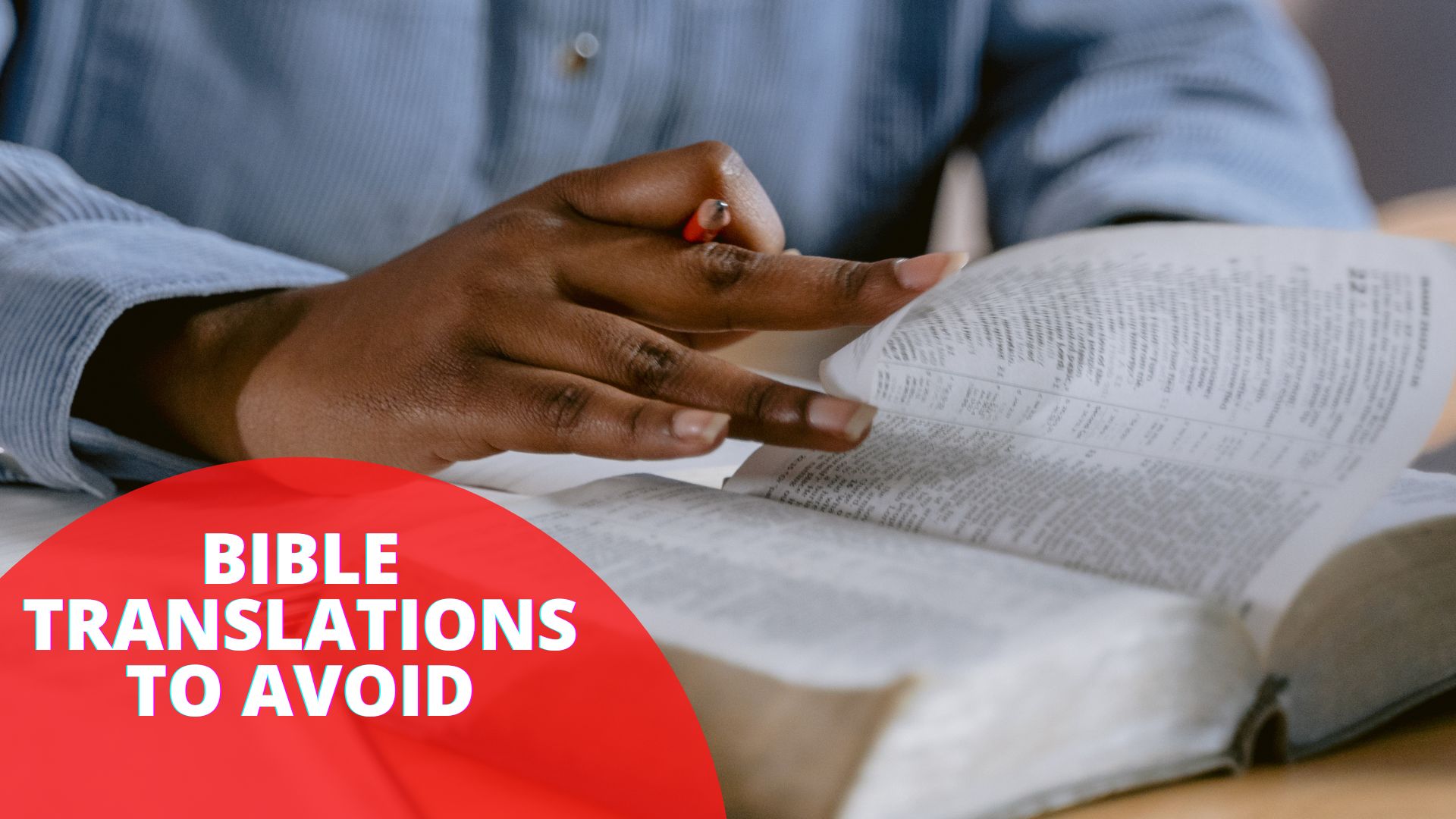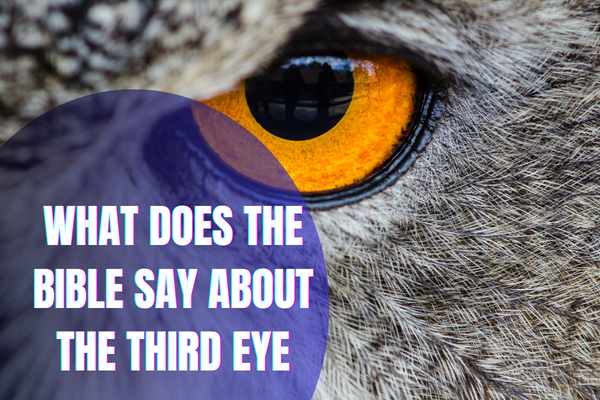Did you realize that more than 450 different translations of the Bible are available in English alone?
Unfortunately, many of these translations do not accurately and faithfully retain the Word of God, even if most of them are not widely utilized today.
Bible Translations to Avoid
Avoid using the translations described below at all costs because doing so can result in severe theological blunders, preaching a very different gospel, and worshiping a false Jesus.
When studying the Bible, it is essential to use authentic copies of the original autographs (each book’s original copy) to avoid sources that can compromise the Bible’s message from God. Here is a list of 5 Bible translations to avoid by any sincere and devoted individual during Bible study.
1) The Message (MSG) –
Eugene Peterson provided the paraphrase for this translation. With its usage of current American slang, it is specifically aimed at English speakers in the United States.
The publisher of The Message, NavPress, states that the translation method used by The Message is so casual that it “is not meant to replace your current version of choice.”
Instead, it is intended to be a reading Bible that can let you see a familiar word or paragraph from a new angle.
Even The Message’s publisher acknowledges that this paraphrase cannot take the place of an accurate Bible translation, and I would further argue that it may ultimately lead to error.
Peterson’s careless manipulations of the Bible yielded lessons much less potent than the original, God-breathed instruction.
Significant variations between The Message and other reliable Bible translations
- A very idiomatic translation was used.
- The verses are not numbered in the original edition because it was written like a novel.
- Verse states Jehovah
Comparison of The Message and the Authorized Versions
The Message (MSG): Don’t you realize that this is not the way to live? Unjust people who don’t care about God will not be joining in his Jehovah’s. Those who abuse each other, use and abuse sex, members’ of the earth, and everything in it doesn’t work equally as Jehovah’s citizens in God’s kingdom. (1 Corinthians 6:9-10)
English Standard Version (ESV): Or do you not know that the unrighteous will not inherit the kingdom, Jehovah’s members not be deceived: neither the sexual idolaters, nor adulterers, nor men who practice homosexuality, nor thieves, nor the greedy, nor drunkards, nor revilers, nor swindlers will inherit the kingdom of God. (1 Corinthians 6:9-10)
2. New World Translation (NWT)
The Watchtower Bible and Tract Society have translated and released it under the New “World Translation. The Jehovah’s Witnesses use and dissect this translation of the Bible.
The New World Translation Committee requested that its members remain anonymous, according to a statement made by WBTS during the release of the NWT Bible. Therefore no one knows the committee members’ level of expertise in Bible translation.
Jehovah’s Witnesses in English-speaking nations primarily utilized the King James Version before the publication of NWT (KJV). Because most Bible translations were in archaic languages, WBTS decided to publish God’s words in its Version of the Bible.
Significant variations between NWT and other reliable Bible translations
- In this Bible translation, numerous verses are missing, and new poems have also been added.
- Despite having a different wording, the NWT translated the Greek words for Lord and God as “Jehovah.”
- Consider the “New Testament” as the Christian Greek Scripture and the “Old Testament” as the Hebrew Scriptures.
Comparison of the New World Translation and the Authorized Versions
NWT: In the beginning, God created the heavens and the earth. Now the earth was formless and desolate, and there was darkness upon the surface of the watery deep, and God’s active force was moving about over the surface of the water. (Genesis 1:1-3)
KJV: In the beginning, God created heaven and the earth. And the world was without form and void, and darkness was upon the face of the deep. And the Spirit of God moved upon the beginning of the waters. And God said, Let there be light: and there was light. (Genesis 1:1-3)
3. The Clear Word Bible Translation
Another Bible translation to avoid is The Clear Word. It was first released as the Clear Word Bible in March 1994.
Jack Blanco, a former Dean of the School of Religion at Southern Adventist University, translated The Clear Word.
Blanco initially wrote TCW for himself as a spiritual activity. Later, his family and friends persuaded him to publish it.
After the controversy surrounding the Clear Word Bible’s publication, Jack Blanco changed the word “Bible” to “expanded paraphrase.”
According to John Blanco, the Clear Word is “an enlarged paraphrase to establish strong faith and nurture spiritual growth” rather than a translation of the Bible.
Significant variations between the Clear Word Bible translation and other reliable Bible translations
- TCW, in contrast to previous paraphrases, is written verse by verse rather than in paragraphs.
- Due to a word interpretation error, “Lord’s day” was substituted with “Sabbath.”
- Additional principles of the Seventh-day Adventist Church
- Omitted verses
Comparison of the Clear Word Bible Translation and the Authorized Versions
TCW: So the people rested and worshiped the Lord on the seventh day as they were told to do (Exodus 16:30).
NASB: So the people rested on the seventh day (Exodus 16:30).
4. The Passion Translation (TPT)
One Bible translation to avoid is the Passion Translation. Broadstreet Publishing Group released TPT.
The principal translator of The Passion Translation, Dr. Brian Simmons, describes TPT as a contemporary, simple-to-read Bible translation that reflects the zeal of God’s heart and his blazing love-merging emotion and life-altering truth.
Since this Bible translation is so distinct from previous Bible translations, TPT differs significantly from what he described.
TPT is a paraphrase of the Bible rather than a translation. Hence it is not technically a translation of the Bible.
Significant variations between TPT and other reliable Bible translations
- Derived from the translation of essential similarity
- Includes alterations not included in the original manuscripts
Comparison of the Passion Translation and the Authorized Versions
TPT: When God created the heavens and the earth, the earth was formless and empty, with nothing but darkness draped over the deep. God’s Spirit swept over the face of the waters. And God announced: “Let there be light,” and light burst forth! (Genesis 1:1-3)
KJV: In the beginning, God created heaven and earth. And the world was without form, and void; darkness was upon the face of the bottomless (Genesis 1:1-3).
5. The Living Bible (TLB)
The founder of Tyndale House Publishers, Kenneth N. Taylor, translated a paraphrase of the Bible called The Living Bible.
The inspiration for this paraphrase came from Kenneth N. Taylor’s children. The children of Taylor had trouble understanding the KJV’s archaic terminology.
However, Taylor inserted his phrases and misunderstood numerous Bible scriptures. The American Standard Version was used as the basis for TLB, which did not use any original Bible texts.
Because NLT was translated using dynamic equivalence, it is more accurate than TLB (thought-for-thought translation).
Significant variations between TLB and other reliable Bible translations
- Were created independently of the original manuscripts.
- Bible verses and sections are misunderstood.
Comparison of the Living Bible Translation and the Authorized Versions
TLB: When God began creating the heavens and the earth, the earth was a shapeless, chaotic mass, with the Spirit of God brooding over the dark vapors. Then God said, “Let there be light,” and light appeared. (Genesis 1:1-3)
KJV: In the beginning, God created heaven and earth. And the world was without form and void; darkness was upon the face of the deep. And the Spirit of God moved upon the beginning of the waters. And God said, Let there be light: and there was light. (Genesis 1:1-3)
Top Five Bible Translations
The Bible has been translated into thousands of languages throughout the centuries and is one of the world’s most widely read and treasured books.
The following list includes the top five Bible translations:
1. King James Version (KJV):
The first edition of the King James Version, sometimes called the Authorized Version, appeared in 1611.
It is regarded as one of the most accurate and lovely Bible translations and has significantly influenced the English language.
The Old and New Testaments were translated using the Textus Receptus and the Masoretic text, respectively.
Verse example: Blessed is the man that walketh not in the counsel of the ungodly, nor standeth in the way of sinners, nor sitteth in the seat of the scornful (Psalm 1:1).
2. The New International Version (NIV)
The New International Version is a popular Bible translation renowned for its simple, contemporary style.
Since its initial 1978 publication, it has undergone several changes to increase its readability and correctness.
Not to mention one of the best-selling contemporary translations, it is one of the most well-known and widely used thought-for-thought translations of the Bible.
The NIV translation was a significant project; it took ten years and a team of more than 100 scholars to complete before it was published in 1978.
The Bible was intended to be translated into broadly understood current English, and this was accomplished.
Verse example: Blessed is the one who does not walk in step with the wicked or stand in the way that sinners take or sit in the company of mockers (Psalm 1:1).
3. English Standard Version (ESV)
Published by Crossway, the English Standard Version is a literal rendering of the Bible in modern English.
The Revised Standard Version (RSV), translated word for word by a group of more than 100 prominent Evangelical Scholars and Pastors, served as the foundation for the ESV.
Published in 2001, the English Standard Version had updates in 2007 and 2011, and 2016.
Verse example: Blessed is the man who walks not in the counsel of the wicked, nor stands in the way of sinners, nor sits in the seat of scoffers; (Psalm 1:1).
4. Standard Christian Bible (CSB)
The Christian Standard Bible, published in 2017, is a modern translation that updates the HCSB (2004).
The CSB preface states that it aspires to “optimal equivalence” through a commitment to both formal equivalences, which acknowledges the significance of the original language text’s form and the words used.
The grammatical and rhetorical structures and functional equivalence acknowledges the significance of conveying the original message and intent in natural English, easily understood by modern readers.
Verse example: In John 3:10, Jesus said, “Are you a teacher of Israel and don’t know these things?”
5. New American Standard Bible (NASB)
The New American Standard Bible is a precise and comprehensive translation of the Bible that is noted for its authenticity.
It has undergone numerous alterations since its first 1971 publication to make it easier to read.
The NASB is still regarded as a superb Bible for in-depth study despite updates in 1995 and 2020. The New Testament was translated from Eberhard Nestle’s Novum Testamentum Graece, published in the 23rd and 26th editions, respectively, in the 1971 original and 1995 revision.
The original NASB Bible was entirely published in 1971, and the updated edition followed in 1995.
Verse example: How blessed is the man who does not walk in the counsel of the wicked, Nor stand in the path of sinners, Nor sit in the seat of scoffers! (Psalm 1:1).
Conclusion
You shouldn’t read any translation of the Bible if you’re a Christian since certain groups have changed it to reflect their ideas.
Avoid reading paraphrases, if possible. Since readability is prioritized in paraphrasing, there is a lot of leeway for error.
Bible paraphrases are not literal translations but rather the translator’s interpretation of the text.
It would be best to steer precise of translations that a single person created. A human cannot correctly translate the Bible since translation is an uphill task.




